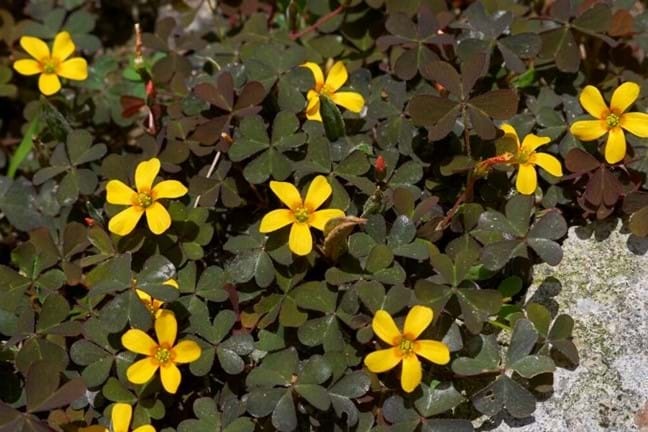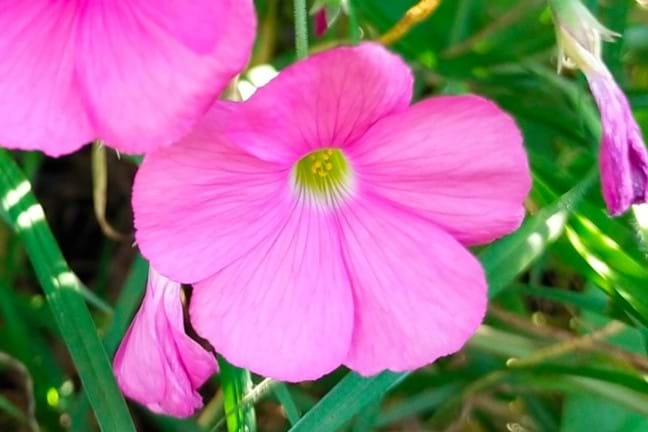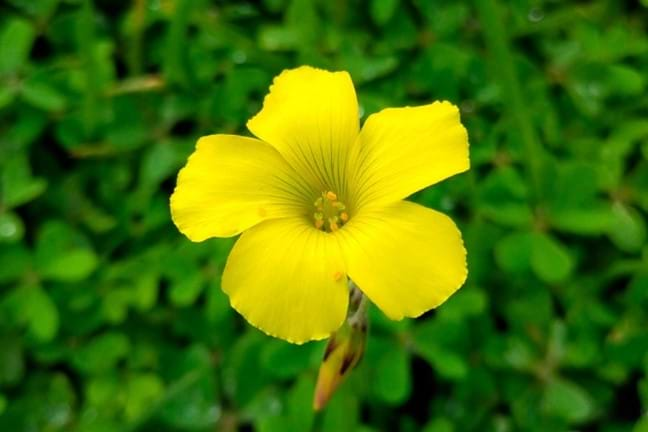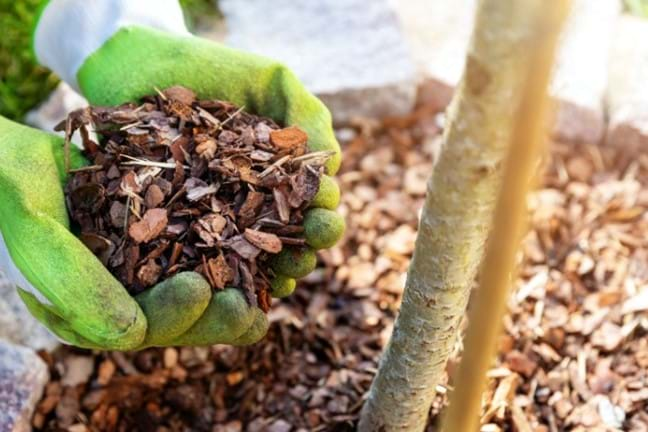Oxalis Control in Your Lawn & Garden
Oxalis spp.
Oxalis spp.
There are about 20 species of Oxalis in Australia, six are native and the rest are introduced. Some Oxalis' are grown as ornamental plants, but most are weeds of lawns and gardens, including these three most common: Creeping Oxalis, Pink Oxalis and Soursob.
Oxalis corniculata

Creeping Oxalis is a soft-wooded plant that is mostly seen growing flat to the ground.
Leaves vary in colours of mid-green, purple-green to brown-green. Leaves are made up of three heart-shaped leaflets that attach at the tip to a long thin stem.
Stems grow flat to the ground and have small roots along the stem.
Roots are mostly fibrous sometimes with small taproots.
Flowers are small (up to 7 mm across) and yellow with five petals.
Seeds sit upright and are green, small, long and thin with a pointed tip.

Creeping Oxalis spreads via rooting stems and from seeds. Seeds can be ejected from the plant and travel small distances, these seeds can also be picked up on people, animals, tools and vehicles. Seeds can also be brought in by landscaping products, such as soil or sand.
In lawns, garden beds, pots, pathways, driveways and other hard surfaces.
Oxalis debilis var. corymbosa

Pink Oxalis is a soft-wooded plant that grows up to 30 cm high.
Plants can have up to 20 leaves. Leaves are green and are made up of three heart-shaped leaflets that attach at the tip to a long thin stem. Leaflets are up to 5 cm across.
Flowers are small (up to 1.8 cm across), pink, have five petals, and grow in clusters of up to 15 flowers per stem.
At the base of the stems is a dense cluster of small bulbs (bulbils).

Pink Oxalis spreads via the bulbils which are often further spread when disturbed and separated.
Pink Oxalis is mostly found in garden beds, lawns, bushlands and roadsides.
Oxalis pes-caprae

Soursob is soft-wooded plant that grows about 20 cm high.
Leaves are green and sometimes flecked with purple. Leaves and are made up of three heart-shaped leaflets (up to 3 cm across) that attach at the tip to a long thin stem.
At the base of the stems is a dense cluster of small bulbs (bulbils).
Flowers have 5 petals, are yellow, up to 5 cm across and can grow in clusters of up to 25 flowers.

Soursob spreads via the bulbils which are often further spread when disturbed and separated. Can also be spread by birds.
Soursob is found in garden beds, lawns, roadsides, near farmlands, and other disturbed areas.
For the control of Oxalis and other annual and perennial weeds growing in the garden, spray with Yates Zero Triple Strike Garden Weedkiller Concentrate - it's a glyphosate-free weedkiller that kills roots and all. Reapply every 10-14 days if regrowth occurs.
Be careful not to spray nearby lawns or plants as it may injure or kill them. To avoid overspray, when spraying keep the nozzle as close to the weed as possible.
You can also spray Oxalis' growing in the lawn with Yates Zero Triple Strike Garden Weedkiller Concentrate, however, as this product is non-selective only use a spot spray for dense areas of oxalis growth. Do not allow Yates Zero Triple Strike to contact the lawn.
Pink Oxalis and Soursob do not spread by seed, so the best time of year to spray is throughout the growing season in autumn, winter and spring.
Creeping Oxalis flowers all throughout the warmer months, so if you want to break the cycle start spraying dense patches of oxalis when the weather starts to warm up in late winter and early spring. As there is likely to be seed remaining in the soil, continue spraying all throughout the warmer months so that any seeds that germinate are controlled before they take hold.
Control Oxalis weeds as soon as you notice them, before they spread and take over.

To help reduce Oxalis in a garden, apply a 2.5 - 3.5 cm layer of a bark-based mulch like Yates Dynamic Lifter 4 in 1 Mulch. You can also use biodegradable weed mat or multiple sheets of damp newspaper or cardboard before applying mulch.
You can also apply a fine layer of mulch to the top of your pots where Creeping Oxalis has been a problem.

It's much easier to get rid of weeds when there are only a few here and there, but when your lawn is more than a quarter covered in weeds, then it becomes more difficult to control. If you find your lawn is covered in weeds, it might be worth considering installing a new lawn.

When mowing, keep the length to about 8 cm, especially in summer.
Grow a thick and healthy lawn by watering regularly and applying organic based fertilisers like Yates Dynamic Lifter Organic Lawn Food - this will promote good growth, and lawn and soil health.
Having a thick, healthy and long lawn helps the lawn to out-compete weeds by starving weeds of light, water and nutrients.
Clover and Burr Medic are the top two weeds that are sometimes confused with Oxalis.